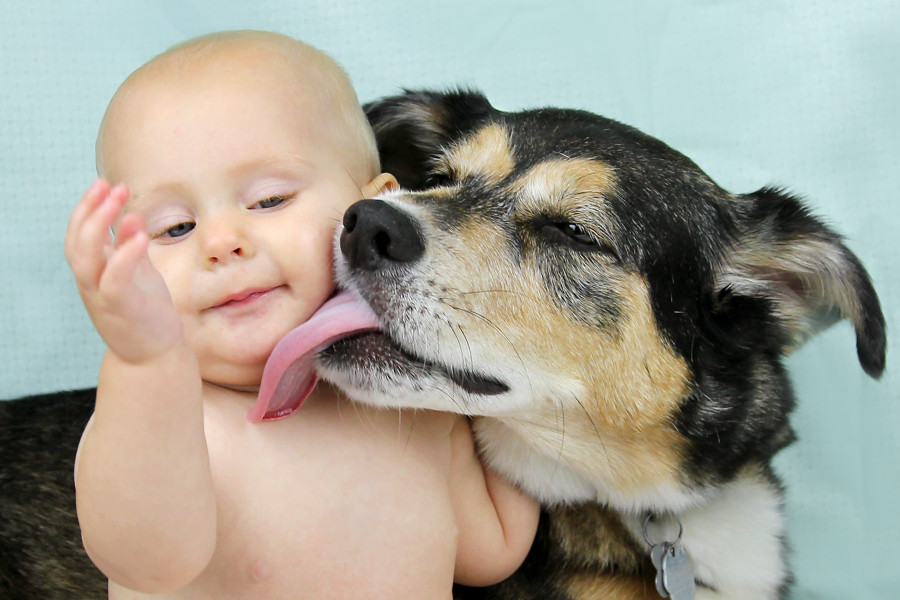You are busy preparing for your new baby. You have made a birth plan and painted the nursery and had all your prenatal visits. But don’t forget to prepare your dog for the new arrival.
If you are like many dog owners who are first time parents, your dog has been the only child in your family for a while. You dog is used to your routine and probably likes the way the household runs. But all that is going to change—drastically—and your dog must get used to the changes. You or your partner will have to prepare the dog before you bring the baby home.
You may have the best behaved dog since Lassie, but a baby is something that most dogs are simply not used to. Dogs react to smells and noise and babies make plenty of both. Changes in your household routine can make your dog anxious. Sadly, too many dogs end up in shelters or are even put down because the baby came along and the two did not interact well. You can help avoid a bad situation by preparing your dog.
Prepping the Pooch
First things first: It might be a good time to review how well our dog is trained. Does he or she sit and lay down on command? Is your pooch trained not to jump up on people? Is your dog well socialized around children? Start spending at least 15 minutes a day training your dog to obey commands, not just when you are standing in front of the dog, but also when you are sitting down or doing something else.
Make sure that your dog has a safe, comfortable dog-only space, such as a crate or a dog bed in a corner away from everything else.
Start bringing baby things into your home so that the dog becomes used to them. If you bring in a rocker, use it a little so that your dog gets used to a chair that moves. Let your dog get used to the smells of a crib, stroller, and high chair. Use some baby lotion and baby powder on yourself to introduce those new smells to the house.
You might even start carrying a doll around like a baby to see how your dog reacts to you. You need to teach your dog to keep out from underfoot as you carry your baby around. If your dog jumps up, stopping this behavior will be an important area to work on.
When the Baby Arrives
The day you bring the baby home, try to stay calm and relaxed because your dog can pick up on your feelings. Have someone else with you as you walk into the house to help distract your dog. Give your dog treats for good behavior.
When you want to introduce baby to dog, do so in a quiet room when the dog is calm. Have the dog on a leash and have someone holding the leash loosely while you talk to your dog in a calm voice. Let the dog sniff the baby’s feet and give the dog praise when it behaves courteously.
As the days pass, give your dog plenty of attention when the baby is awake. Make sure the dog gets enough exercise. Try to get the dog to associate your baby with good things. Positive reinforcement is key. Yelling at the dog will make the dog associate bad things with the baby. Treats will help the dog associate good things with the new baby.
Whatever you do, never leave your baby alone with your dog. A dog and a small child must always be supervised when they are together. Even a dog that is being friendly can scratch or jump on a baby.
The American Society for the Prevention of Cruelty to Animals has extensive advice on getting your dog ready for your baby.
If your dog is not doing well when your baby comes home–and especially if you have a dog with any aggression issues—consult with a certified professional dog trainer or a certified applied animal behaviorist in your area. Your veterinarian can usually recommend someone.
Share your thoughts with us in the comments section below.

